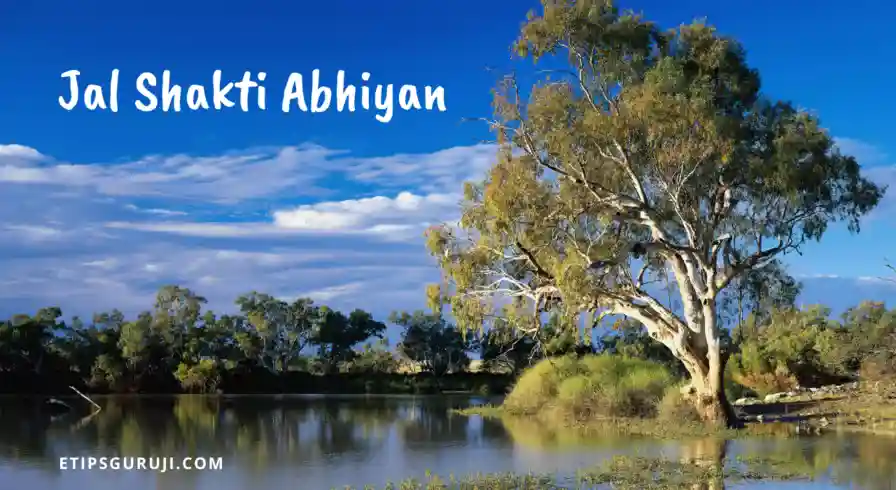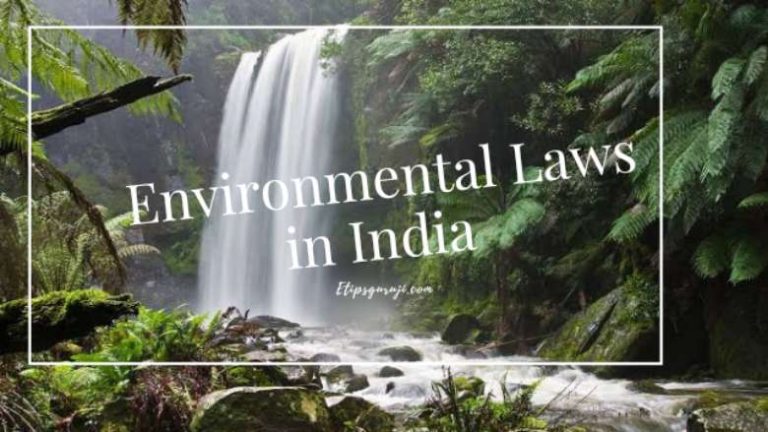Jal Shakti Abhiyan: An Initiative To Expand Water Conservation Efforts
Jal Shakti Abhiyan is an initiative to conserve water through various means. Its objective is ensuring access to potable water to every household.
Jal Shakti Abhiyan is an initiative to conserve water through various means. Its objective is ensuring access to potable water to every household. We all know the value of water for every living thing on the earth. Although water covers 70% of the globe, the amount of fresh water is limited. Many regions are running out of water suitable for irrigation purposes, drinking, and cooking. Millions of people around the world are lacking access to fresh water. Frequent droughts, inadequate rainfall, and drying rivers are worsening the situation.
Governments of various countries are concerned about the declining water levels hence they encourage people to save water through various campaigns and programs. One such campaign is Jal Shakti Abhiyan from the government of India. Read on to find out more about the Jal Shakti mission or Jal Shakthi Abhiyan.
English Meaning of Jal Shakti
Jal meaning in English: Jal means water which has to be saved at any cost to save biodiversity on the earth. Jal Abhiyan is related to all the practices and guidelines necessary for water conservation.
Abhiyaan meaning in English: Abhiyan is a Hindi word for a mission. To fulfill any goal, a mission is carried out by the government or local bodies and sometimes private people also. Goals may be different but the meaning of Abhiyan remains the same that is spreading awareness.
Shakti: Power is called Shakti in Hindi and here water is considered to be a powerful natural resource that is crucial for all the ecosystems.
Jal Shakti Abhiyan or Jala Shakti Abhiyan: a mission or campaign dedicated to water conservation and water security in India with collaborative efforts of all the responsible ministries from the state governments as well as the government of India.
Jal Shakti ministry or Jal Shakti Mantralaya
The Jal shakti ministry brings water-related issues under a single ministry. Various water conservation practices are governed by Jal Shakti Mantralaya. Ministries of Water Resources, Drinking water & sanitation, and River Development & Ganga Rejuvenation were merged to form the Jal Shakti Mantralaya for the Jal Shakti Abhiyan.
The newly formed Ministry of Jal Shakti will look after issues like clean water drinking, Namami Gange projects, and international & inter-states water disputes. Moreover, it will roll out the “Nal se Jal” scheme that aims to provide a piped water connection to each home of the country by 2024.
Key Points of Jala Shakti Abhiyan

The campaign for water conservation and water security in India was launched in 2019 by the Ministry of Jal Shakti. The main areas of focus of Jal Shakti Abhiyan will be the water-stressed district and blocks of the country.
The main water conservation intervention of Jal Shakti Mission includes water conservation through various techniques like rainwater harvesting, recharging water storage structures, recycling, and reusing water. Watershed development will be given importance and intensive afforestation will be carried out.
Renovation of traditional and other water bodies or tanks will be done to maximize the storage of water. Renovation of traditional water bodies ensures there is sufficient water supply for a longer period.
Jal Jeevan Mission
Jal Jeevan Mission is another initiative by the Central Government to ensure water supply through pipes in rural households. The initiative became so popular that Jal Jeevan Mission UPSC questions have become an important part of the current affairs. The mission combines various water conservation efforts including desilting of minor irrigation tanks and point recharge. Water from kitchen and sinks, known as greywater can be used for irrigation to avoid wastage.
A community approach to water is required to fulfill these goals. A “Jan Andolan” is needed to maximize community participation to provide a functional tap connection for every household by 2024. The Har Ghar Nal SE Jal (HGNSJ) ambition will not only fulfill the freshwater requirement but also save people from water-borne diseases.
National Jal Mission
National Jal Mission or National Water Mission (NWM) is an approach towards integrated water resource management. The mission aims at conserving water through minimizing wastage. Its objective includes ensuring equitable distribution of water to every household across and within states. It will also consider the provisions of the National Water Policy to develop a framework for optimizing water use. Regulatory mechanisms will be there to increase water efficiency by 20%.
It has to be noted that the water needs of urban areas can be met through the recycling of wastewater. Requirements of coastal cities can be fulfilled through the adoption of new techniques like low-temperature desalination of ocean water.
Basin-level management strategies can deal with varying rainfall and river flow patterns due to climate change. This includes procedures like:
- Enhancement of storage systems above and below the ground level.
- Rainwater harvesting.
- Addition of equitable and efficient management structures.
- Development of new regulatory structures with appropriate entitlements and pricing.
- Optimizing the efficiency of current irrigation systems.
- Rehabilitation of systems that were run down.
- Expanding irrigation wherever feasible.
- Targeted efforts to increase storage capacity.
- Designing incentive structures to promote water neural.
- Recharging of underground water sources.
- Adoption of large scale irrigation programs relying on sprinklers, ridge & furrow irrigation, and drip irrigation.
Jal Shakti Abhiyaan Guidelines
Guidelines for Research and Development of the project were published on August 24, 2020, by the Ministry of Jal Shakti, Department of Drinking Water and Sanitation. Since the rural drinking water supply is a complex matter, it requires management at environmental, social, and technical levels. The R& D guidelines will encourage young participants, entrepreneurs, researchers, academia, and start-ups to provide cost-effective solutions for managing water supply efficiently.
Also, the concerned departments will conduct research and concurrent evaluation studies to manage rural water supply effectively and economically. For R&D, thrust areas have been categorized as:
- Various techniques to treat drinking water and supply it to the affected areas.
- Provision to provide potable water in harsh climatic conditions and areas prone to disasters.
- Application of smart technologies to monitor the water supply.
- Research on social aspects, behavioral change, and governance in the rural water supply including sanitation.
- Application of greywater management techniques in rural areas.
Operational guidelines for the implementation of the mission
Any strategy for planning and implementation requires a clear mission and vision. The vision is to supply every rural household with clean drinking water on a regular and long term basis. It has to be at affordable service delivery charges to improve the living standards of rural communities.
The mission is to empower and facilitate states and UTs in a participatory rural water supply strategy to ensure potable drinking water security. It involves the creation of a water supply infrastructure to provide every rural household with a functional tap connection by 2024. Planning, awareness, empowerment, and expert assistance are crucial to carrying out the project.
Support activities like training, development of utilities, and water quality testing are necessary to combat the challenges. Natural disasters and calamities also affect the functioning of the system. These issues need to be addressed through proper strategies to make Jal Shakti Abhiyan a success.
Challenges to National Jal Mission
One of the major reasons for modern problems is the growing population. Secondly, the uncontrolled drawl of groundwater is lowering the water table. Climate change increased chemical contamination and extreme climatic events are resulting in water scarcity.
Community Participation
The Top-down approach and lack of community participation are among the major challenges for any government scheme. Local communities and Gram Panchayat within the villages, need to come forward and participate in decisions and activities. A community-led partnership with states and UTs can bring long term sustainability to the objectives of Jal Shakti Abhiyan.
The involvement of committed NGOs, CSOs for PRA will ensure proper implementation of guidelines. The role of modern technologies can not be neglected. Various innovative techniques can save costs and time. Additionally, partnerships with different stakeholders will accelerate the processes of Jal Shakti Abhiyaan.
The Jal Shakti Mission or Jal Shakti Abhiyan will ensure the sustainability of water availability in terms of adequacy, potability, convenience, equity, and affordability. Water is one of the necessities and no country can develop without access to such a valuable resource.






